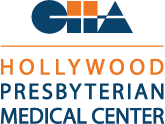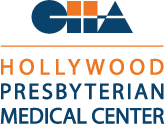Ophthalmologists check the health and general condition of patients’ eyes and conduct diagnostic tests to determine whether any disease is present. Early detection and treatment give the patient the best possible chance to overcome eye problems and diseases and retain clear, healthy sight.
Depending upon a patient’s circumstances, age and particular concerns, an ophthalmologist may conduct any number of the following tests:
-
Health history questions
Questions an ophthalmologist may ask include those about current and past vision problems, surgeries, family history, medications taken and other health conditions, such as diabetes, that can have a bearing on eye health.
-
Prescription evaluation
 An ophthalmologist schedules regular examinations to ensure an
up-to-date prescription for patient’s corrective lenses. Patients should bring their glasses or contact lenses
to the office for possible prescription updating.
An ophthalmologist schedules regular examinations to ensure an
up-to-date prescription for patient’s corrective lenses. Patients should bring their glasses or contact lenses
to the office for possible prescription updating.
-
Measurements of vision
A visual acuity test determines the degree of a patient’s visual clarity. The familiar Snellen chart typically consists of 11 rows of capital letters, each row printed in a decreasing size. The patient reads the names of the letters from 20 feet away, with or without wearing corrective lenses, and covering one eye at the time. Depending on the results, the ophthalmologist may prescribe new glasses or contact lenses or make adjustments to an existing prescription.
-
Refraction testing
In a refraction assessment, an ophthalmologist uses a computer-guided refractor to ascertain how light rays focus at the back of a patient’s eye. Retinoscopy is another tool used in this diagnostic process. The ophthalmologist will shine a light into the depths of the eye, evaluate the pattern of movement, also known as "red reflex," as the light is reflected back by the patient’s retina, and record the degree of any refractive error.
If there is a significant deviation from normal refraction, the doctor will likely prescribe corrective lenses or refractive surgery.
To further refine the results of a refraction test, an ophthalmologist may ask the patient to look through a phoropter, which is a device comprised of different lenses that rotate on a system of wheels. As the doctor presents different configurations of lens strength and pairings, the patient determines which combination provides the greatest overall visual acuity when reading the letters on a Snellen chart.
-
Dilation of the pupils
Undergoing dilation in an eye exam is a common procedure and a highly useful tool in obtaining an adequate view of the eye and diagnosing a number of conditions. With the aid of dilation and using one or more light sources, the ophthalmologist can examine the inside of each eye.
Patients should allow time after the end of an exam for the resulting blurred vision to wear off before returning to normal activities. They should also bring a pair of sunglasses, as recently dilated eyes are sensitive to light.
-
Examination with a slit lamp
Using a device called a slit lamp, which is a type of lighted microscope for examining the eye, an ophthalmologist can easily view the eye’s inner fluid chamber, as well as components such as the iris, cornea and lens. Fluorescein dye is commonly used to temporarily stain the tear film covering the eye so any cell damage becomes apparent.
-
Viewing the retina and the back of the eye
In performing a funduscopy, or ophthalmoscopy, the ophthalmologist conducts a thorough examination of the posterior part of the eye, particularly the optic disk and retina, as well as the choroid, the blood vessel layer that supports and nourishes the retina. To get the optimal view, the ophthalmologist will likely dilate the patient’s pupil.
For viewing the back of the eye, an ophthalmologist uses an ophthalmoscope to direct a beam of light onto the rear of the eye. In other cases, the doctor may use a condensing lens and a forehead-mounted light to examine the same part of the eye while the patient is reclining.
-
Checking for glaucoma
Glaucoma screenings typically make use of a tonometer, which determines the level of intraocular pressure. After applying numbing drops, a puff of air is blown into the eye by the tonometer while the ophthalmologist measures the pressure in the eye. This is a particularly important step in the early detection and treatment of glaucoma.
In some cases, the ophthalmologist may perform applanation tonometry, which tests the level of force necessary to momentarily depress the cornea. This procedure requires fluorescein eyedrops administered with anesthetic. The ophthalmologist may also use an instrument called a pachometer, which employs sound waves to gauge the cornea’s thickness.
-
Gauging muscle strength
Patients also may undergo a test of the muscles responsible for eye movement. The ophthalmologist asks a patient to visually track a moving object, often a lighted pen, by moving only the eyes. The physician is looking for any indications of muscle weakness or inadequate coordination of movement.
-
Visual field test
A visual field test gauges how well a patient can see objects on the periphery of vision without moving the eyes. The ophthalmologist asks the patient to cover one eye, look ahead without moving the head or eyes, and note each time an object comes into view.
The patient may also be asked to concentrate on a point at the center of a screen and tell the examiner when the object changes location or moves off screen.
-
Color blindness test
Using a series of cards with multi-colored dots arranged in patterns, the physician tests a patient’s ability to see the numbers and figures depicted. If the patient is unable to distinguish these figures, the ophthalmologist will proceed to diagnose different types and severity of color blindness.
-
Communication with the patient
At the conclusion of the exam, the ophthalmologist should spend time with the patient to discuss findings, test results and next steps, as well as answer any questions the patient may have.
 ENGLISH
ENGLISH  РУССКИЙ
РУССКИЙ 


